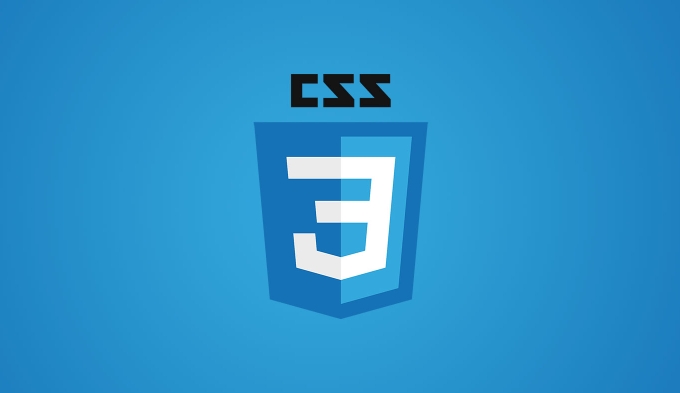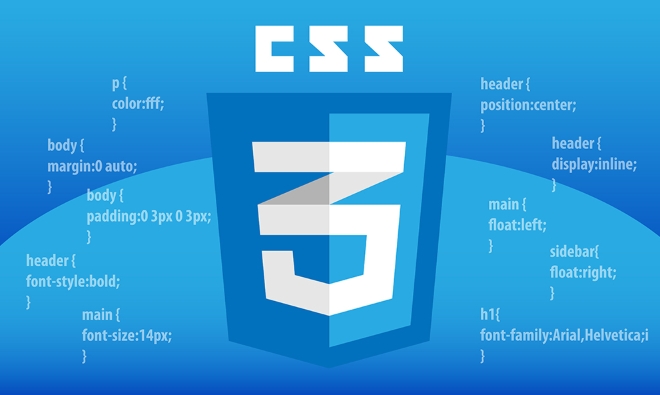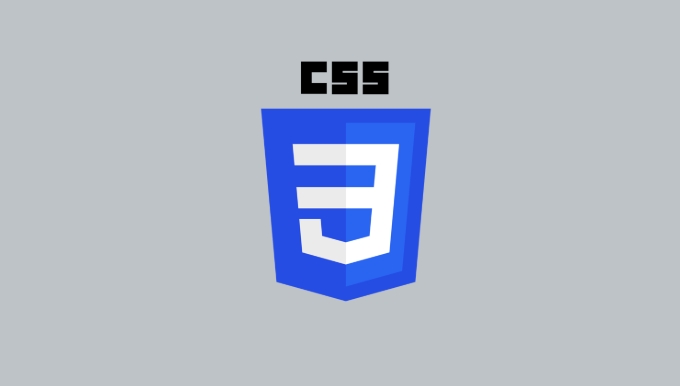CSS selector priority and cascade rules determine the final application effect when multiple styles conflict. 1. The priority is determined by the selector type calculation score, inline style > ID selector > Class/Property/Pseudo-Class Selector > Element/Pseudo-Element Selector; 2. Cascading involves the priority of the style source, including user agent style, user style, developer style, !important declaration and inline style; 3. The last loaded style under the same priority covers the front; 4. Use the browser developer tools to troubleshoot style conflicts, check the override, !important usage, spelling errors and the order of introduction. Mastering these rules can help write stable and clear CSS code.

The priority and cascade rules of CSS selectors are often encountered but easily confused parts in front-end development. Understanding these rules can help you avoid many style conflicts, especially when the project is complex or when multiple people collaborate.

What is selector priority?
Simply put, priority determines which one will be applied eventually when multiple CSS rules act on the same element . Priority is not simply "over the front", but rather calculates the score based on the type of selector, and the rule with high scores wins.

For example, the following example:
p {
color: red;
}
#main p {
color: blue;
} Even if the <p></p> tag is written in front of the CSS file, the color will turn blue as long as it is selected by the higher priority selector #main p .

The priority is calculated like this (from high to low):
- The inline style has the highest priority (for example:
style="color: red") - ID selector (such as:
#header) - Class selector, attribute selector, pseudo-class (such as:
.btn,[type="text"],:hover) - Element selector, pseudo-element (such as:
div,::before)
You can remember in a four-digit way:內(nèi)聯(lián)(1,0,0,0) > ID(0,1,0,0) > 類等(0,0,1,0) > 元素等(0,0,0,1)
What's the matter with the stacking order?
In addition to priority, there is also a concept called Cascading that will also affect the final style.
Cascading refers to how the browser decides who takes effect from multiple sources, including:
- User Agent Style Sheet (Browser Default Style)
- User-defined styles (such as user-set font size)
- Styles written by developers (your CSS file)
- Important statement (using
!importantstyle) - Inline style
There is also a priority relationship between them, in the rough order:
- Normal style (normal writing)
-
!importantstyle (use with caution) - The last loaded style of the same priority will overwrite the previous one
So if you write two identical class names and have the same priority, then the subsequent rule will override the previous one .
How to tell which rule works?
In actual development, you can use the browser's developer tools (F12 or right-click check) to see which styles are applied to an element and where these styles come from.
Here are a few tips to help you make a quicker judgment:
- Look at the crossed style in DevTools, which means it is overwritten
- Pay attention to whether it is used
!important - Check for spelling errors or mismatched selectors
- View the order of introduction, especially if multiple CSS files are
For example: If you have a .button class but you see the style of another .btn class on the page, it may be because the two have the same priority and .btn is written later in the file.
Summarize the key points
In general, understanding CSS priority and cascade mechanisms can help you write clearer and more stable style code. Remember a few key points:
- Priority is determined by selector composition, ID > Class > Element
-
!importantis strong, but don't abuse it - Under the same priority, the following style will overwrite the previous one.
- Use developer tools to quickly troubleshoot problems
Basically, that's all. Although it looks a bit abstract, you can slowly grasp the rules when paying more attention to these details during the debugging process.
The above is the detailed content of Understanding CSS Selector Specificity rules and cascading. For more information, please follow other related articles on the PHP Chinese website!

Hot AI Tools

Undress AI Tool
Undress images for free

Undresser.AI Undress
AI-powered app for creating realistic nude photos

AI Clothes Remover
Online AI tool for removing clothes from photos.

Clothoff.io
AI clothes remover

Video Face Swap
Swap faces in any video effortlessly with our completely free AI face swap tool!

Hot Article

Hot Tools

Notepad++7.3.1
Easy-to-use and free code editor

SublimeText3 Chinese version
Chinese version, very easy to use

Zend Studio 13.0.1
Powerful PHP integrated development environment

Dreamweaver CS6
Visual web development tools

SublimeText3 Mac version
God-level code editing software (SublimeText3)

Hot Topics
 What is 'render-blocking CSS'?
Jun 24, 2025 am 12:42 AM
What is 'render-blocking CSS'?
Jun 24, 2025 am 12:42 AM
CSS blocks page rendering because browsers view inline and external CSS as key resources by default, especially with imported stylesheets, header large amounts of inline CSS, and unoptimized media query styles. 1. Extract critical CSS and embed it into HTML; 2. Delay loading non-critical CSS through JavaScript; 3. Use media attributes to optimize loading such as print styles; 4. Compress and merge CSS to reduce requests. It is recommended to use tools to extract key CSS, combine rel="preload" asynchronous loading, and use media delayed loading reasonably to avoid excessive splitting and complex script control.
 External vs. Internal CSS: What's the Best Approach?
Jun 20, 2025 am 12:45 AM
External vs. Internal CSS: What's the Best Approach?
Jun 20, 2025 am 12:45 AM
ThebestapproachforCSSdependsontheproject'sspecificneeds.Forlargerprojects,externalCSSisbetterduetomaintainabilityandreusability;forsmallerprojectsorsingle-pageapplications,internalCSSmightbemoresuitable.It'scrucialtobalanceprojectsize,performanceneed
 Does my CSS must be on lower case?
Jun 19, 2025 am 12:29 AM
Does my CSS must be on lower case?
Jun 19, 2025 am 12:29 AM
No,CSSdoesnothavetobeinlowercase.However,usinglowercaseisrecommendedfor:1)Consistencyandreadability,2)Avoidingerrorsinrelatedtechnologies,3)Potentialperformancebenefits,and4)Improvedcollaborationwithinteams.
 CSS Case Sensitivity: Understanding What Matters
Jun 20, 2025 am 12:09 AM
CSS Case Sensitivity: Understanding What Matters
Jun 20, 2025 am 12:09 AM
CSSismostlycase-insensitive,butURLsandfontfamilynamesarecase-sensitive.1)Propertiesandvalueslikecolor:red;arenotcase-sensitive.2)URLsmustmatchtheserver'scase,e.g.,/images/Logo.png.3)Fontfamilynameslike'OpenSans'mustbeexact.
 What is Autoprefixer and how does it work?
Jul 02, 2025 am 01:15 AM
What is Autoprefixer and how does it work?
Jul 02, 2025 am 01:15 AM
Autoprefixer is a tool that automatically adds vendor prefixes to CSS attributes based on the target browser scope. 1. It solves the problem of manually maintaining prefixes with errors; 2. Work through the PostCSS plug-in form, parse CSS, analyze attributes that need to be prefixed, and generate code according to configuration; 3. The usage steps include installing plug-ins, setting browserslist, and enabling them in the build process; 4. Notes include not manually adding prefixes, keeping configuration updates, prefixes not all attributes, and it is recommended to use them with the preprocessor.
 What are CSS counters?
Jun 19, 2025 am 12:34 AM
What are CSS counters?
Jun 19, 2025 am 12:34 AM
CSScounterscanautomaticallynumbersectionsandlists.1)Usecounter-resettoinitialize,counter-incrementtoincrease,andcounter()orcounters()todisplayvalues.2)CombinewithJavaScriptfordynamiccontenttoensureaccurateupdates.
 CSS: When Does Case Matter (and When Doesn't)?
Jun 19, 2025 am 12:27 AM
CSS: When Does Case Matter (and When Doesn't)?
Jun 19, 2025 am 12:27 AM
In CSS, selector and attribute names are case-sensitive, while values, named colors, URLs, and custom attributes are case-sensitive. 1. The selector and attribute names are case-insensitive, such as background-color and background-Color are the same. 2. The hexadecimal color in the value is case-sensitive, but the named color is case-sensitive, such as red and Red is invalid. 3. URLs are case sensitive and may cause file loading problems. 4. Custom properties (variables) are case sensitive, and you need to pay attention to the consistency of case when using them.
 Case Sensitivity in CSS: Selectors, Properties, and Values Explained
Jun 19, 2025 am 12:38 AM
Case Sensitivity in CSS: Selectors, Properties, and Values Explained
Jun 19, 2025 am 12:38 AM
CSSselectorsandpropertynamesarecase-insensitive,whilevaluescanbecase-sensitivedependingoncontext.1)Selectorslike'div'and'DIV'areequivalent.2)Propertiessuchas'background-color'and'BACKGROUND-COLOR'aretreatedthesame.3)Valueslikecolornamesarecase-insens






